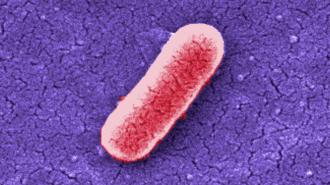UC Davis researchers have created part-natural, part-artificial “cyborg” cells that might one day be engineered to do everything from fight cancer to clean up the environment.
Synthetic bio 101: Mother Nature is an excellent engineer — the human body alone contains about 200 types of cells, each precisely designed to serve a specific function while also working in harmony with all the other types.
When you add in all the other cells found in the 1.2 million identified species on Earth, you end up with a lot of perfect little biological machines — and a goal of synthetic biology is to put those machines to work.
One way to do this is by genetically engineering cells to have new abilities — this could mean modifying the single-celled organism E. coli to convert plastic waste into useful vanillin, or engineering cancer patients’ immune cells to recognize tumors.
Artificial cells can’t reproduce, but they’re also not as complex or capable as their living counterparts.
The challenge: Engineering living cells like this gives us access to the baseline abilities of countless cell types, but one skill shared by all these cells is the ability to reproduce — and that can make deploying them risky.
Rather than working with living cells, some synthetic bio researchers are creating structures in the lab that mimic cells. These artificial cells can’t reproduce, but they’re also not as complex or capable as their living counterparts — nature still has us beat.
Cyborg cells: Researchers at UC Davis have now unveiled cyborg cells that — as the name implies — combine natural and artificial components. This is done in such a way that the cells retain most of the capabilities of natural cells except their ability to reproduce.
To create the cyborg cells, the UC Davis team infused bacteria with the building blocks of an artificial polymer. When the cells were exposed to UV light, these parts came together to form a hydrogel inside the cells.
The engineered cyborg cells were capable of invading lab-grown cancer cells.
Not only does this hydrogel prevent the cells from being able to divide and reproduce, it also makes them more robust — the cyborg cells were able to survive exposure to stressors that would kill the bacteria in its all-natural form, including hydrogen peroxide and antibiotics.
To demonstrate the utility of these cyborgs, the researchers engineered cells that were capable of invading lab-grown cancer cells — an ability that could potentially be put to use delivering cancer treatments right where they’re needed.
Looking ahead: The UC Davis team is still researching the best way to create and program their cyborg cells, but this could be the first step toward a future in which synthetic biologists can deploy engineered living cells without having to worry about their mutating or growing out of control.
“We are excited about the potential applications of the cyborg cells to solve environmental challenges, diagnose or treat diseases, and modulate disrupted microbiota,” said co-author Cheemeng Tan.
We’d love to hear from you! If you have a comment about this article or if you have a tip for a future Freethink story, please email us at [email protected].






